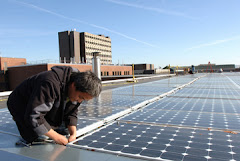 Six months prior to the UN Climate Change Conference (COP15) in Copenhagen, the World Business Summit on Climate Change brings together CEOs, government representatives, scientists and thought leaders to put forward recommendations for the next global treaty on climate change.
Six months prior to the UN Climate Change Conference (COP15) in Copenhagen, the World Business Summit on Climate Change brings together CEOs, government representatives, scientists and thought leaders to put forward recommendations for the next global treaty on climate change. At the Summit, global leaders, through workshops and debates, will learn about and develop the latest low-carbon solutions as well as present the most advanced and innovative business strategies to combat climate change.
The goal of the Summit is to demonstrate how policy, coupled with innovative business models, can drive a sustainable transformation of the economy and stimulate job creation and low-carbon solutions.
The World Business Summit on Climate Change is going on now in Copenhagen.
The Website link is here. A link to videos, including a fine keynote speech by Al Gore, is here.
UPDATE, May 26:
Gore, Ban urge business leaders to help reduce greenhouse gases.
Despite the global financial crisis, both Ban and Gore said there was no time for delay in hashing out the specifics of how to cut greenhouse gases that contribute to warming the planet.
“We have to do it this year. Not next year. This year,” Gore said. “The clock is ticking, because Mother Nature does not do bailouts.” The full AP report is here.
UPDATE, May 27:
The Copenhagen Call
Global business leaders at the World Business Summit on Climate Change call on political leaders to agree an ambitious and effective global climate treaty at COP15 in Copenhagen. Sustainable economic progress requires stabilizing and then reducing greenhouse gas emissions. Success at COP15 will remove uncertainty, unleash additional investment, and bolster current efforts to revive growth in a sustainable way. The full document is here.














